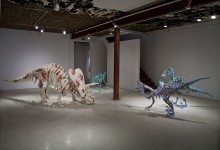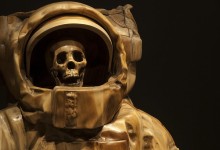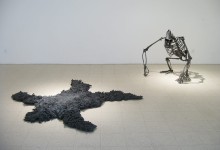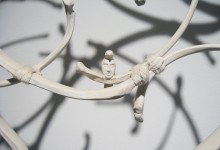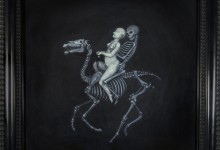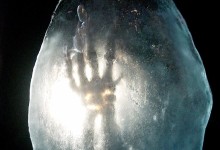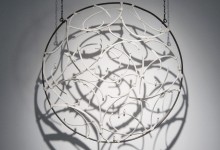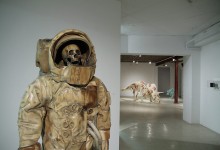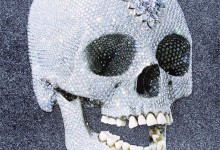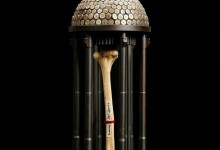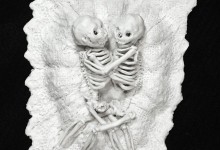Translated by Professor Norman Cornett
Nowadays a video game sports the name Memento Mori, yet this Latin phrase has its roots in ancient Rome and means, “Remember that you must die.” During victory celebrations a servant had the task of whispering into the triumphant general’s ear, memento mori, so as to remind him that he remained but a mere man, and that conquest did not entail immortality.
In the 17th century this term denoted a fashionable genre of art largely informed by Christianity. It gave pride of place to the representation of human skulls. For example, a death’s-head served in pictorial compositions to symbolize human fragility and equally to evoke the vaingloriousness of worldly affairs. However, this did not constitute the only interpretation of the aphorism, memento mori. Some gave it an entirely different connotation based on Isaiah 22:13, “let us eat and drink; for tomorrow we shall die.” This reading urged people to live life to the fullest and thus marks a stark contrast to the Christian stance which called for self-restraint and virtuousness.
Skulls and bones play a prominent role in contemporary artistic expression. What does the preponderance of this iconography signify in the current context? Everyone acknowledges the resurgent, widespread appeal of a vanitas aesthetic in artworks, fashion, design, etc. In fact, vanitas motifs appear across the board, whether on album covers, t-shirts, jewellery, or books. As traditional abhorrence of the human skull wanes so too death no longer seems to strike fear. The weakening of religion’s hold on our lives chiefly accounts for this freedom from the dread of dying. Modern representations of vanitas in effect mirror this newfound freedom. The Dutch philosopher Baruch Spinoza wrote, “A free man thinks least of all about death, instead he wisely meditates life.”
In the twenty-first century we know about the existence of dinosaurs primarily because their bones have survived down through the ages. By the same token, we can date the dawn of human history thanks to bones which archeologists have unearthed. One could therefore say that of all our body parts, bones come closest to a kind of immortality. Should we consequently view them apt emblems of life?
Do we stand on the threshold of a new ideological movement, indeed a new way of perceiving the human condition? Freed from our fear of death, will we become “bone-again humans”?
Text by Eve De Garie-Lamanque
Translated by Professor Norman Cornett
Vanitas vanitatum, et omnia vanitas…
– Vanity of vanities; all is vanity
From the word go the vanitas artistic genre claims the lion’s share of this exhibition, as evinced by its constituent skulls and bones. This type of art has evolved considerably over the course of time and remains relevant to this day. It bears witness to the changes that our relationship with death has undergone during the last three or four centuries. It also attests to the profound influence which the industrial revolution and globalization have exercised on our pursuits and value systems.
In this day and age the threat of eternal damnation informs the daily lives, decisions, and acts of precious few Westerners. Furthermore, in Quebec the number of believers has plummeted so that its inhabitants particularly give little credence to this threat. To what extent does that affect the moral precepts we advocate? Although ever present, illness and death no longer represent constant dangers. Rather, industrialization and advances in medicine have contributed to a major improvement in life expectancy (a rise of about 65% occurred from 1900 to 2000 in industrialized nations). Our lifestyles and consumer behaviour have changed, along with our fears. Little wonder then that ageing concerns us more than dying. In a similar vein, our eternal fate worries us less than our daily welfare because we have gradually come to realize the impact of our actions on our health and the environment.
The selected works that comprise this exhibition impel us not so much to ponder the fleetingness of human existence as to address its multifaceted complexity within the purview of contemporary issues. Running the gamut from political to postmodern, these works perpetuate well-established artistic traditions to which they pay homage, all the better to subvert them. These works also assume the guise of ‘pop’ culture and the bizarre in order to articulate philosophical concepts. Meantime, they confront consumer society by examining its pathological love of opulence, ‘Dollarama syndrome,’ and factory mass production, which sooner or later results in the loss of skills and crafts. Their critique leaves no stone unturned as it surveys colonialism, the ironic interdependence of religion and war, the art market, the many faces of elitism, and the futility of our pastimes ranging from video games to reality television. While informative and trenchant, these works prove equally expressive, if not playful. In the face of vacuousness they throw down the gauntlet through a panoply of mediums that testify to the explosion that has taken place in this artistic genre.


